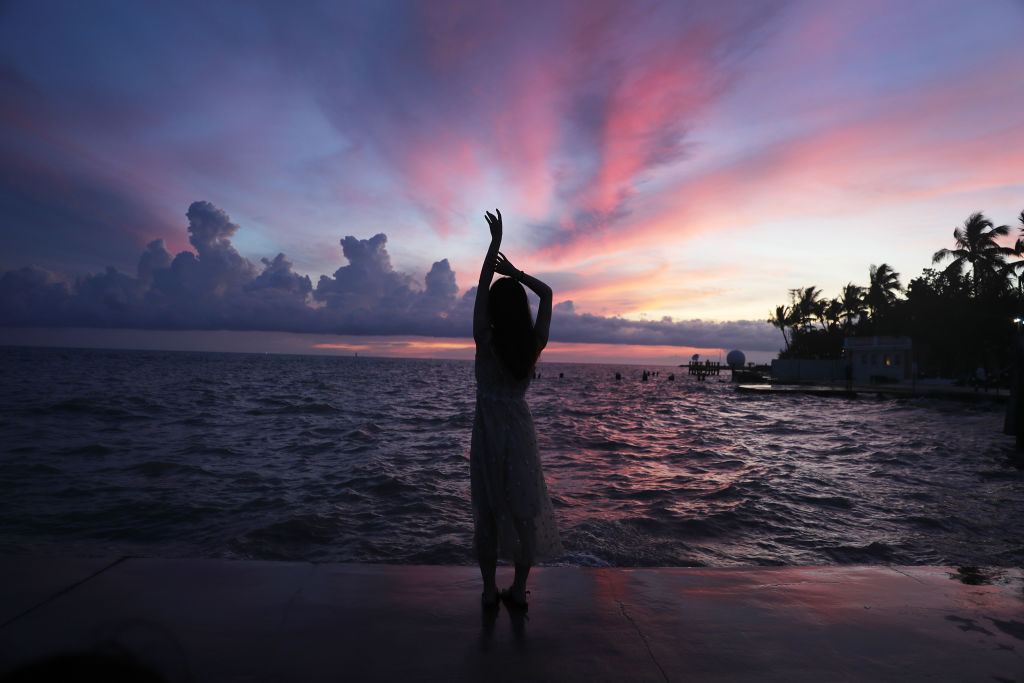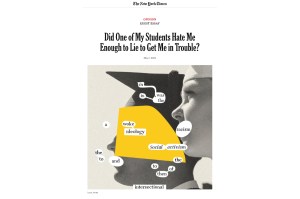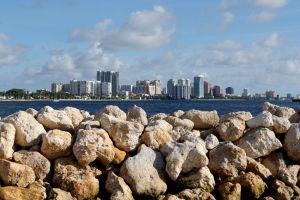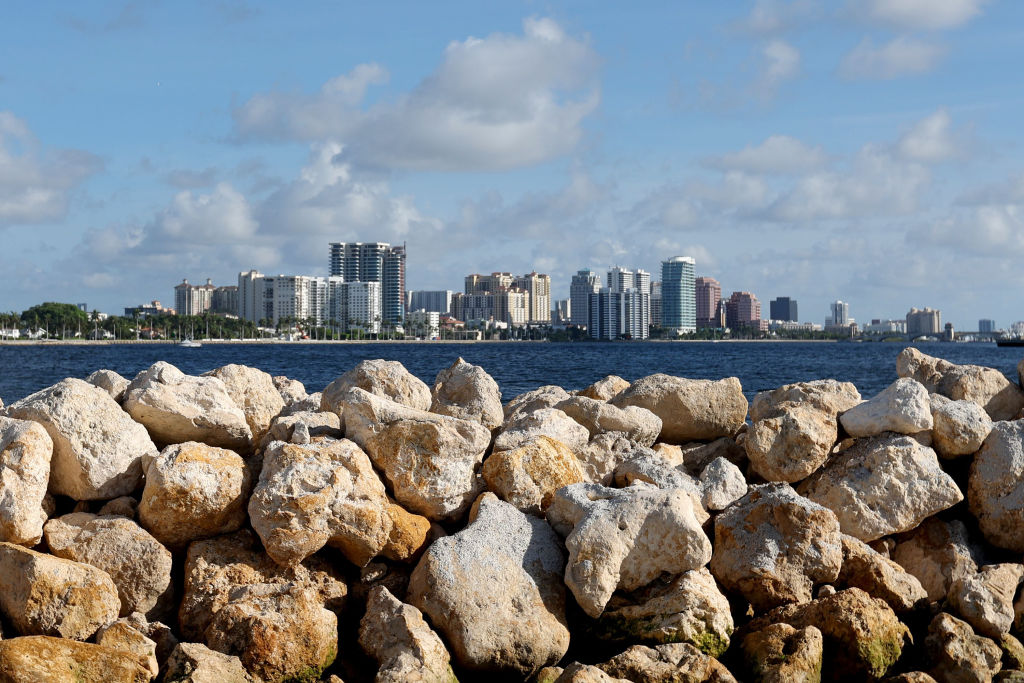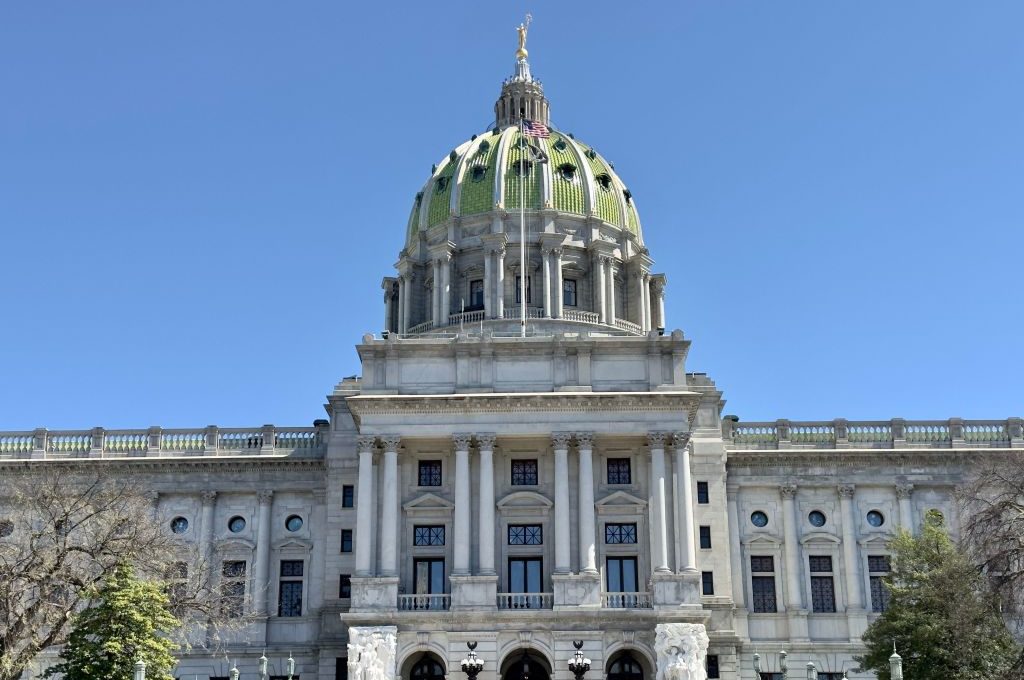This article is in
The Spectator’s December 2019 US edition. Subscribe here.
Key West was originally called Cayo Hueso (Bone Island in Spanish) either for its bleached limestone rock or because the Calusa Indians used it as a burial ground. The first European here was Spain’s Ponce de León in 1521, on his spiritual quest for the Fountain of Youth. Lt Cmdr Matthew Perry planted the American flag on March 25, 1822. By the 1880s, Key West was the richest town in Florida.
I first came on a Greyhound in November 1977. I knew no one. An American boyfriend in London had talked about breakfasting with fishermen, and of the Southern writer who was his mentor. The boyfriend sported a Hemingway-like beard; I did once visit Hemingway’s former house on Whitehead Street.
Two men from the Midwest ran the Southern Cross Hotel on the main shopping street, Duval (named after Florida’s first governor). I’d cross to Shorty’s for grits, eggs and bacon at the counter. Shorty’s is now a grocery and sells sandwiches. Dennis Pharmacy, where I breakfasted in the Nineties, is a bank. The Atlantic Shores Hotel on South Street, where we danced by the water at the Sunday-night disco, is condos.
It rained a lot that November. Walking at night past little wooden houses, I’d catch strong wafts of weed from the young people on the shadowy porches. The ‘bums’ on Duval came south for the winter too. At the Atlantic end of town — Cuba 90 miles away — bearded men and long-skirted women lived in campervans beside the Casa Marina Hotel, opened on New Year’s Eve, 1920. It was conceived by Henry Flagler, who died before building began and whose Flagler Railroad linked the mainland to Key West until the hurricane of 1935. One fellow loner invited me to his camp to eat baked potatoes. Another took me to a birthday dinner at La Concha Hotel. He would regularly hear beings from outer space.
In December 1989, a writer friend, Janet Hobhouse, rented a tiny house from Alison Lurie the novelist. It was so cold, I spent nine days in the bath. The Florida orange crops failed. Janet’s cancer came back.
What still drew me to the place? I have never been anywhere where the sea has such beautiful colors that change so rapidly — white, silver, pale turquoise, kingfisher blue. My excitement in the little plane from Miami to Key West never diminishes. The passengers are on their iPhones when they should be gazing out over the coral reefs.
At sunset or early morning on the wooden pier at Higgs Beach (damaged by Hurricane Irma in 2017, now rebuilt), I watch pelicans, cormorants and the little sandpipers that run along the beach with long black beaks, black on their wings. The sunsets are extraordinary, the dying sky to the east almost as beautiful. Bikers swim off the pier in their clothes and generations of Hispanic families splash around in rented kayaks. Alas, that fine old Flagler hotel — used by the US military during World War Two and in the Cuban Missile Crisis — became a vulgarized Waldorf Astoria resort. In 1997, writer Joy Williams recommended the simple, Fifties Art Deco of the El Patio Motel, independently owned by Sarah and Steve Baxter. George, the Hungarian who worked there as a boy, is still there, now a married man.
I love Key West’s Cuban flavor. The painter Mario Sanchez (1908-2005) was the grandson of Cuban emigrés. His father was a ‘lector’ in the Gato cigar factory, reading aloud to the workers. Mario, self-taught, had a pictorial memory of the Key West of his childhood. He started painting on grocery bags and cedar wood boards, then did bas-reliefs in his brother’s yard. Yesterday I bought shrimp from the Cuban lady who for years has had Tomasita’s, the little wooden hut opposite where Sanchez worked. I pulled the bell on its rope and waited. She’s very old, and descended her four steps carefully backwards in a lovely pink cardigan.
When I was here in February 1996, Brothers to the Rescue, a Cuban organization in Miami, flew into Cuban airspace to distribute anti-Castro leaflets. The Cubans shot down two planes in international airspace as they returned to America. Cubans risked their lives on makeshift rafts to get here, often landing near Higgs Beach. Today, there are day-return flights to Havana and, earlier this year, the old Gato factory hosted an exhibition of contemporary Cuban painters.
I also love the random friendships and encounters that occur. This year at the dog park, I’ve met a man shot in the head in Vietnam, and Christa, whose husband is on jury duty yet again; there are so few permanent residents that the same people are called on. At the Lost Kitchen Supper Club on Stock Island, I met Heather May who teaches middle schoolers with learning difficulties and sings show tunes at a bar on Duval.
Key West has lost some of its bohemian flavor. It’s too expensive for the young and those who work here, though for oldies there are plays, concerts, talks, historic houses, two dog parks, even restaurant tours. And Key West retains its eccentricity. Listening to Raven Cooper singing at the Schooner Wharf Bar, a friend just photographed a black hen and a chick, nesting under the stage.
This article is in The Spectator’s December 2019 US edition. Subscribe here.



